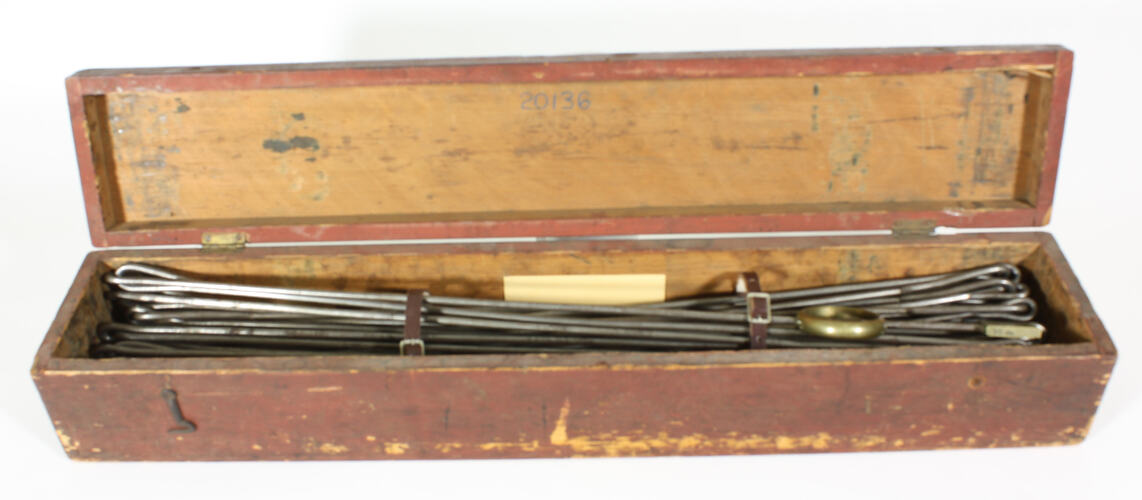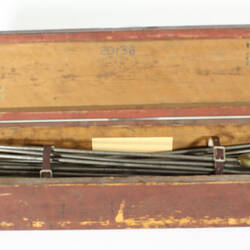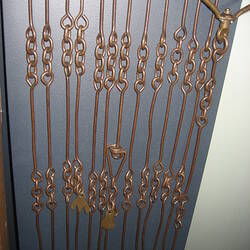Summary
Ramsden type high precision steel surveying chain with 40 links, each of precisely 2.5 feet (762 mm) in length, with a total overal length of 100 feet (30.480 m), housed (when folded) in a wooden box. Known in the United States as an 'engineer's chain'. Used for the accurate surveying (measurement) of terrestrial distances. Similar in construction to a Gunter's surveryors chain, but of a different overall length.
This chain was acquired from the former Crown Lands & Survey Department and was possibly used by Geodetic Survey of Victoria, which between 1860 and 1872 undertook the first high precision triangulated survey of the then Colony of Victoria, under the direction of Robert Ellery, Director of the Melbourne Observatory and Government Astronomer.
The first surveyor's chain was designed by the English clergyman and mathematician Edmund Gunter (1581-1626) and introduced in 1620. It comprised of a metal chain made up of 100 links measuring a precise overall length of 66 ft or 22 yards - with each link thus measuring 7.92 inches (201.168 mm). The Gunter's chain was originally intended to be used in the accurate laying out and measurement of plots of land, for legal and commercial purposes, but was subsequently widely used by surveyors throughout the British Empire and Europe, with an Imperial mile being 80 times the Gunter's chain length. The similar, but more accurate Ramsden's chain, was developed by the British scientific insrument maker and optician, Jesse Ramsden (1735-1800), for the Anglo-French Survey (1784-1790), Britain's first high-precision geodetic base-line survey and was later used for similar geodetic surveys throughout the British Empire. The original Ramsden chain had 100 links of precisely 1 foot each in length, measuring 100 feet (30.480 m) in overall length.
Physical Description
Chain has 40 links, each is of round steel 0.5cm in diameter. Round brass handles.
More Information
-
Collecting Areas
-
Acquisition Information
Donation from Victoria: Crown Lands & Survey Department, 01 Jul 1936
-
Date Used
-
Classification
-
Category
-
Discipline
-
Type of item
-
Overall Dimensions - Folded
845 mm (Length), 156 mm (Width), 152 mm (Height)
Folded length. Unfolded = 30480mm (100ft)
-
Keywords





